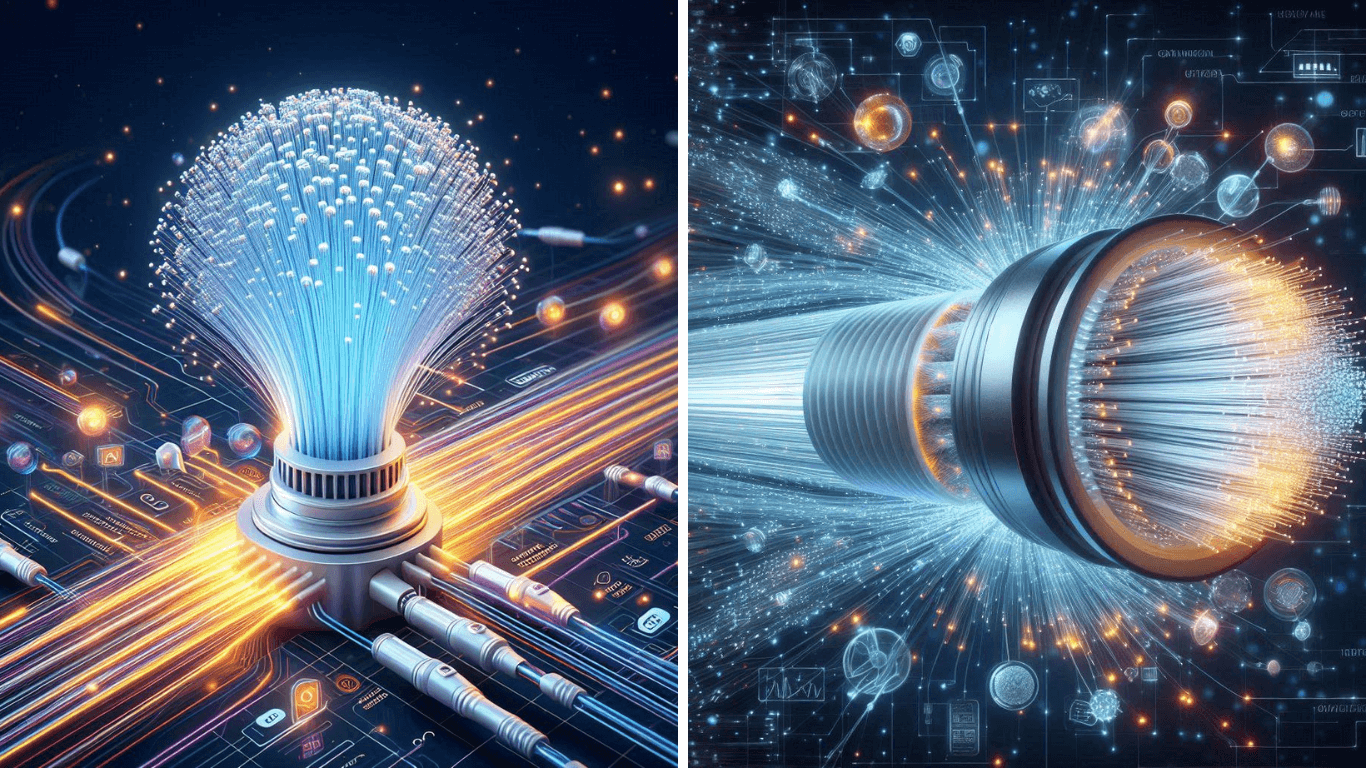
Fiber optic technology has revolutionized data transmission by using light to transfer information quickly and efficiently. Unlike traditional copper cables, which rely on electrical signals, fiber optics use light pulses to send data across long distances with minimal interference or loss. Let’s dive deeper into how this technology works and the benefits it provides.
The Core Components of Fiber Optic Technology
- Light Source Fiber optic cables use either lasers or light-emitting diodes (LEDs) to create light pulses. These light pulses represent binary data—the ones and zeroes used in computing and communication systems. The choice between a laser or an LED depends on the system’s requirements; lasers tend to be faster and more precise, while LEDs are cost-effective and commonly used for shorter distances.
- Transmission Through Optical Fibers Once generated, the light pulses travel through the optical fiber, which is made of ultra-thin strands of glass or plastic. The core of the fiber, which carries the light, is surrounded by a cladding layer that helps keep the light within the core. This happens through a process known as total internal reflection, where light bounces off the internal walls of the fiber, ensuring it stays confined to the core and reaches the destination without escaping.
- Reception and Data Conversion At the receiving end of the fiber optic system, a photoelectric cell or detector interprets the light pulses and converts them back into electrical signals. These signals are then sent to electronic devices such as routers, computers, or servers, where they are understood as digital data.
Why Fiber Optics Are So Efficient
Fiber optics stand out due to their ability to transmit large amounts of data at incredibly high speeds. Light can transmit data faster and carry more information than electrical signals. Additionally, fiber optic cables are less prone to signal loss over long distances and are immune to electromagnetic interference (EMI), making them ideal for environments with high levels of electronic noise.
Fiber Optic Internet Speed
One of the most well-known applications of fiber optic technology is fiber optic internet, which is significantly faster than traditional DSL or cable internet. Fiber optic internet can offer speeds of up to 1 Gbps (gigabit per second) or even higher, enabling users to download large files, stream high-definition videos, and access cloud services with ease.
Advantages of Fiber Optics Over Copper Cables
- Higher Bandwidth: Fiber optic cables can carry more data than copper cables, making them suitable for high-speed internet, HD video streaming, and other data-intensive applications.
- Longer Distance Transmission: While copper cables lose signal strength over long distances, fiber optics can transmit data for miles without significant degradation.
- Immunity to EMI: Fiber optics are immune to electromagnetic interference, unlike copper cables, which can experience signal disruption from nearby electrical devices.
- Better Security: Since fiber optic cables do not emit signals, they are harder to tap into, making them more secure for sensitive data transmission.
- Durability: Fiber optic cables are more resistant to environmental factors like temperature changes, moisture, and corrosion compared to copper.
What is Total Internal Reflection?
Total internal reflection is a critical principle in fiber optic technology. It occurs when light traveling within the optical fiber’s core hits the boundary between the core and the cladding at an angle that is greater than the critical angle, causing it to reflect back into the core. This repeated reflection keeps the light contained within the fiber, allowing it to travel long distances with minimal loss of signal.
This phenomenon is possible due to the difference in refractive indices between the core and the cladding. The core has a higher refractive index than the cladding, ensuring that light consistently reflects back into the core as it travels.
Conclusion
Fiber optic technology works by transmitting data in the form of light pulses through thin optical fibers, offering high-speed, long-distance, and interference-free communication. The process relies on light sources, total internal reflection, and efficient conversion of light back into electrical signals at the receiving end. The advantages of fiber optics—such as higher bandwidth, greater security, and longer transmission ranges—make it the go-to choice for modern internet and communication systems.